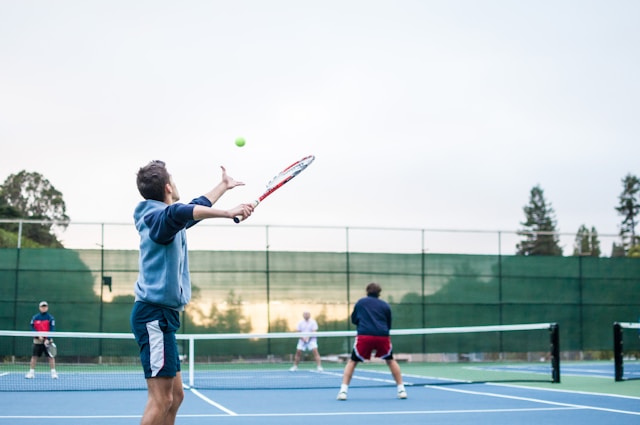
The serve is a pivotal element in tennis, setting the pace and tone for each point. A strong serve can give players a strategic advantage, making it crucial to master. This guide offers comprehensive tips and techniques to refine your serve, helping you dominate games and intimidate opponents right from the first swing.
Mastering the Basics
Before diving into complex serves, ensure your fundamental technique is solid. Stand shoulder-width apart, with the front foot pointing towards the net and the back foot parallel to the baseline. This stance provides the necessary stability and balance for a powerful serve.
The grip on your racquet is equally crucial. The Continental grip, often used by professionals, is recommended for its versatility across various types of serves. It allows for better wrist snap and control, which is essential for executing flat, slice, and kick serves effectively. Regularly practicing these critical elements is vital as it lays the groundwork for more advanced serving techniques.
Perfecting the Toss
The ball toss is fundamental to the success of your serve. A consistent, well-placed toss sets up the entire motion and impact. For a powerful flat serve, the ball should be tossed slightly in front of you, enabling you to hit it at the peak of its arc, which maximizes power transfer from the racquet to the ball.
The ball’s position will differ slightly for slice and kick serves to facilitate the appropriate spin. A slice serve requires a toss that is somewhat to the right for right-handed players, allowing the racquet to brush across the ball and imparting lateral spin. Consistency in your toss is crucial and can differentiate between a good and a great serve.
Generating Power through Technique
A blend of leg drive, torso rotation, and arm extension generates power in a serve. Initiate your serve with a deep knee bend, acting as a spring, propelling your body upward and forward into the serve. This movement should be fluid and explosive, channeling energy through your body into the ball.
As you extend upwards, rotate your torso while maintaining an extended tossing arm pointing toward the ball. This rotation should be synchronized with the upward swing of your serving arm, resembling a whip’s motion, which significantly increases the serve’s speed and power. The flexibility of your wrist plays a crucial role here, adding a final snap that drives the ball forward with added force.
Incorporating Spin for an Unpredictable Serve
Spin serves can confuse opponents and add a strategic layer to your game. A slice serve, created by brushing the racquet face across the ball at an angle, introduces lateral spin, making the ball curve and bounce unpredictably. This serve can be a tactical asset, especially on wider serves that stretch the opponent.
On the other hand, the kick serve requires the ball to be tossed slightly behind and to the left for right-handers. The racquet should make contact in an upward and outward motion, imparting topspin that causes the ball to bounce high and to the side, challenging the receiver. These serves are invaluable on second serves, where consistency and reducing double faults are crucial.
Strategies for Effective Serving
Strategic serving involves varying your serve to exploit your opponent’s weaknesses. Mixing up speeds, spins, and directions keeps your opponent guessing and unable to settle into a rhythm. A powerful flat serve down the center reduces the angle for return, while a well-placed slice serve can widen the court, exposing gaps in their coverage.
Observe and adapt to your opponent’s positioning and play style. Serving their weaker side or targeting their movement can yield easy points or weak returns, setting you up for a winning shot. Success in serving strategically often comes from practicing different serves and developing an awareness of using them in match situations.
Practice and Match Play Integration
Practice is essential for mastering your serve. Dedicate time to practicing each type of serve until you can execute it confidently during matches. Create a routine that includes serving from both the deuce and the advantage sides of the court under various match scenarios to simulate pressure.
Incorporate serving drills that improve both accuracy and power. Use targets to practice hitting specific areas of the service box, and work on serving under simulated match conditions to enhance your ability to perform when it counts. Additionally, varying your practice conditions to include different surfaces and weather conditions can help adapt your serve to any situation.
A well-honed serve can dramatically improve your tennis game, making it a formidable weapon against any opponent. You can elevate your play and keep your opponents on the defensive by mastering the basics, perfecting your toss, generating powerful techniques, incorporating spin, and employing strategic serves. Regular practice and strategic use of your serves during matches will not only boost your confidence but also enhance your overall performance on the court. So, take the time to refine your serve; the rewards on the court will be well worth the effort.